ESS topic test Y9T2
1/55
Earn XP
Description and Tags
stuff
Name | Mastery | Learn | Test | Matching | Spaced |
|---|
No study sessions yet.
56 Terms
layers of the Earth

The Crust
Oceanic crust
Found on the ocean floor
Dense and heavy
Mostly basaltic composition
Continental crust
Forms the continents
Less dense and lighter
Mostly granite composition
The Mantle
divided into 2 sections
Lithosphere
•Solid outer part of the earth which includes the crust and the upper part of the mantle.
•From surface to 100km down.
Asthenosphere
•Denser, weaker, and semi-molten layer
•From 100km down to 400km down
•Very hot
outer core
The core is the very dense and hot centre of the earth. It is made mostly of iron and nickel.The core is the very dense and hot centre of the earth. It is made mostly of iron and nickel.

inner core
The innermost layer of the Earth, composed primarily of solid iron and nickel, and extremely hot with temperatures reaching up to 5,500 degrees Celsius. Plasma state of matter but behaves like a solid.
layers of the atmosphere
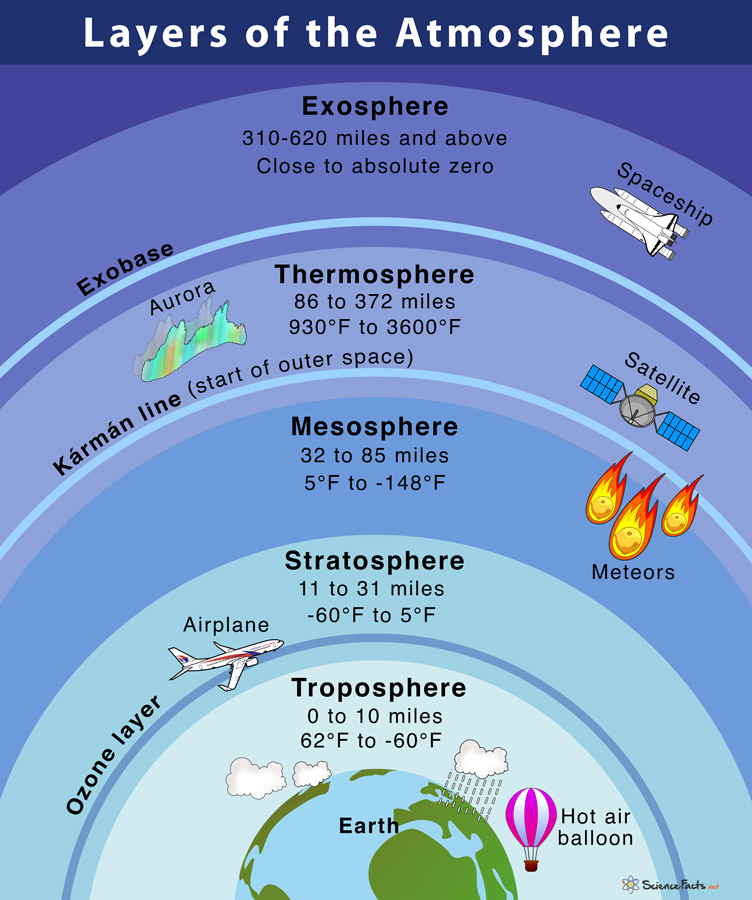
Trophosphere
The lowest layer of the atmosphere, where weather occurs and where most of the Earth's air mass is located.
stratosphere
The layer of the atmosphere above the troposphere, characterized by a temperature increase with altitude and containing the ozone layer.
mesosphere
The layer of the atmosphere above the stratosphere, known for decreasing temperatures with altitude and where meteors burn up upon entry.
thermosphere
The outermost layer of the atmosphere, characterized by significantly high temperatures and sparse air, where the ionosphere is located and where the auroras occur.
ionisphere
The region of the thermosphere containing electrically charged particles, important for radio communication and the formation of auroras.
exosphere
The outermost layer of the atmosphere, situated above the thermosphere, where atmospheric particles are extremely sparse and satellite orbits occur.
Solar wind
Magnetic activity on the Sun's surface propels super-fast
charged electrons and ions into space - this is known as solar wind.
Earth’s magnetosphere
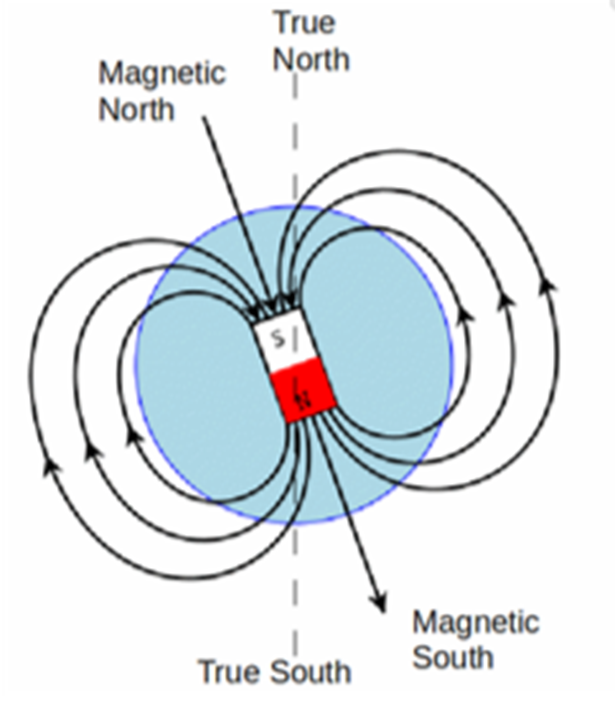
The region surrounding Earth, dominated by its magnetic field, which protects the planet from solar wind and cosmic radiation.
How the Magnetosphere protects us
The magnetosphere protects Earth by deflecting solar wind and cosmic radiation, preventing harmful particles from directly reaching the atmosphere and surface, thus preserving life.
How auroras ar formed and their colours and which element it is
The solar wind particles collide with atoms in the Earth's atmosphere and emit photons of light.
The colour of the light emitted depends on the type of
atom the particles collide with.
Blue or red glow means that nitrogen has been struck; green means oxygen has been struck.
subduction
The process by which one tectonic plate moves under another, sinking into the Earth's mantle, often leading to volcanic activity and the formation of mountain ranges.
3 pieces of evidence of continental drift
1.•The Earth’s continents seem to fit very well together like a jigsaw puzzle.
Fossil Evidence – Similar fossils were found on different continents in patterns that suggest a previous connection.
•Glossopteris Fern
•Lystrosaurus –fossils of this reptile were found in South Africa, Antarctica, India and China.
•Warm weather plant species fossils were found in Arctic regions.
Similar rock structures on different continents like mountain ranges.
•A mountain range along the east coast of North America match a range of mountains in North-Western Europe.
Names of the original land masses
•About 250 million years ago all of the continents were joined in one large land mass called Pangea.
About 180 to 200 million years ago Pangea broke into two land masses called Laurasia and Gondwana
which later drifted into present-day continents.
Explain how convection currents impact the movement of tectonic plates

Convection currents in the Earth's mantle create a flow of magma that drives the movement of tectonic plates. As hot magma rises and cools, it generates a cycle that pushes plates apart at divergent boundaries and pulls them together at convergent boundaries.onvection currents are movements within the Earth's mantle caused by the heat from the core. These currents lift hot magma upward and allow cooler magma to sink, creating a cycle that moves tectonic plates.
convection current diagram
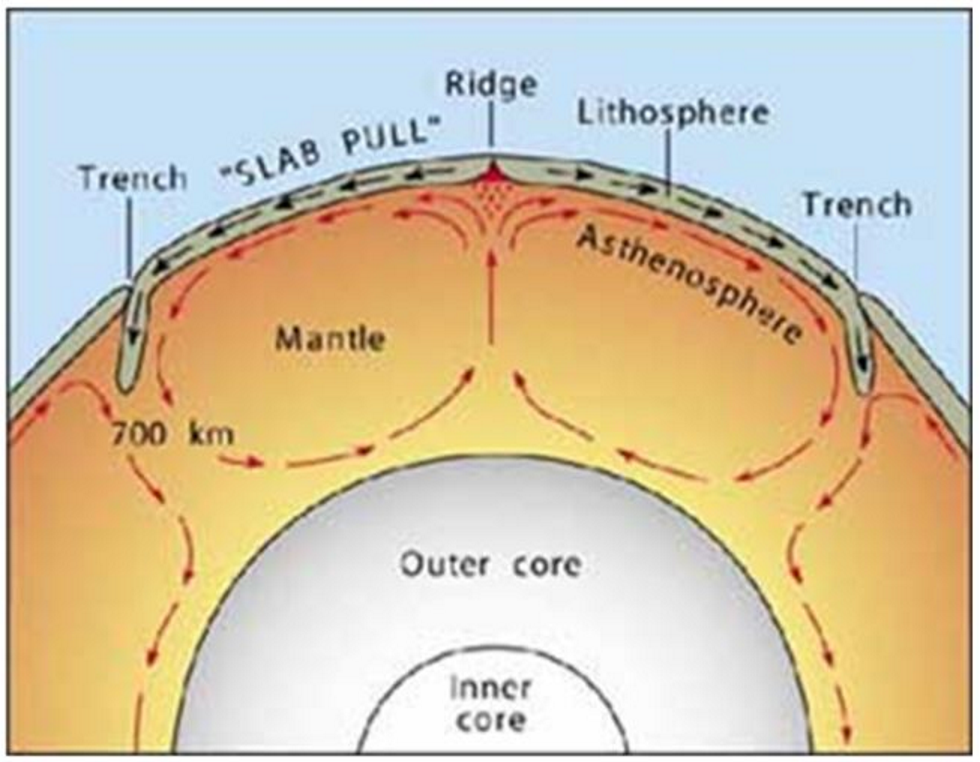
Explain how mid ocean ridges are created by plate tectonics

Mid-ocean ridges are formed at divergent boundaries where tectonic plates move apart, allowing magma to rise and create new oceanic crust.
•At the mid-ocean ridge, molten material rises from the mantle and erupts.
•The molten material spreads out, pushing older rock to both sides of the ridge.
•This process that continually adds to the ocean floor is sea floor spreading.
8 major tectonic plates on Earth.
The eight major tectonic plates on Earth include the Pacific Plate, North American Plate, Eurasian Plate, African Plate, South American Plate, Antarctic Plate, Indian Plate, and the Nazca Plate. These plates float on the semi-fluid asthenosphere and interact at their boundaries, causing geological activity.
How does the location of the major earthquakes and volcanoes of the world relate to the location
of tectonic plate boundaries?
Major earthquakes and volcanoes are primarily located along tectonic plate boundaries due to the intense geological activity occurring at these sites, such as subduction, rifting, and transforming movements that generate seismic events and volcanic eruptions.
where the 8 major plates are located on a map


diverging plate boundary and types of geological activity and landforms that form at these boundaries.
Diverging plate boundaries occur where tectonic plates move apart, leading to the formation of new crust as magma rises to the surface. This process can create features such as mid-ocean ridges, rift valleys, and volcanic activity.
converging plate boundary and types of geological activity and landforms that form at these boundaries.
Converging plate boundaries occur where tectonic plates collide, resulting in geological phenomena such as subduction zones, mountain ranges, and volcanic arcs. This interaction can lead to intense seismic activity and the recycling of crustal materials.
transforming plate boundary and types of geological activity and landforms that form at these boundaries.
Transforming plate boundaries occur where tectonic plates slide past each other, causing friction and resulting in earthquakes. These boundaries often create features like fault lines and transform faults, such as the San Andreas Fault.
image of different plate boundaries

how are volcanoes formed
Volcanoes are formed when molten rock, or magma, from beneath the Earth's crust escapes to the surface through fractures or openings, usually at converging or diverging plate boundaries. This process can create volcanic eruptions and result in the buildup of volcanic landforms.
What is meant by destructive and constructive boundaries?

Destructive boundaries refer to areas where tectonic plates converge, leading to subduction and the formation of features like trenches and volcanic arcs. Constructive boundaries are regions where plates move apart, allowing magma to rise and create new crust, forming features like mid-ocean ridges.
each typpe of volcano and simple definition
There are three main types of volcanoes: shield volcanoes, which have broad, gentle slopes and are formed by gentle eruptions of low-viscosity lava; stratovolcanoes (or composite volcanoes), which have steep, conical shapes and are built from alternating layers of lava and ash; and cinder cone volcanoes, which are small, steep-sided cones formed from explosive eruptions of volcanic rocks and ash.

more diagrams of eacg volacone

what is an earthquake
•Earthquakes occur along fault lines.
•These represent fractures (zones of weakness) within the brittle rocks that makeup the crust of our planet.
•It is the abrupt rupture or movement along these structures that triggers an “earthquake”.
•When an earthquake occurs, the energy is dissipated into the surrounding medium through seismic waves.

Primary waves (P waves)
•longitudinal wave
•Arrive first at Seismograph stations
•Can travel through any type of material
•Nearly twice the speed of S Waves.

Secondary waves (S Waves)
•Transverse waves
•Are slower - arrive second at Seismograph stations
•Can only travel through solids.
•Cause more damage than P Waves
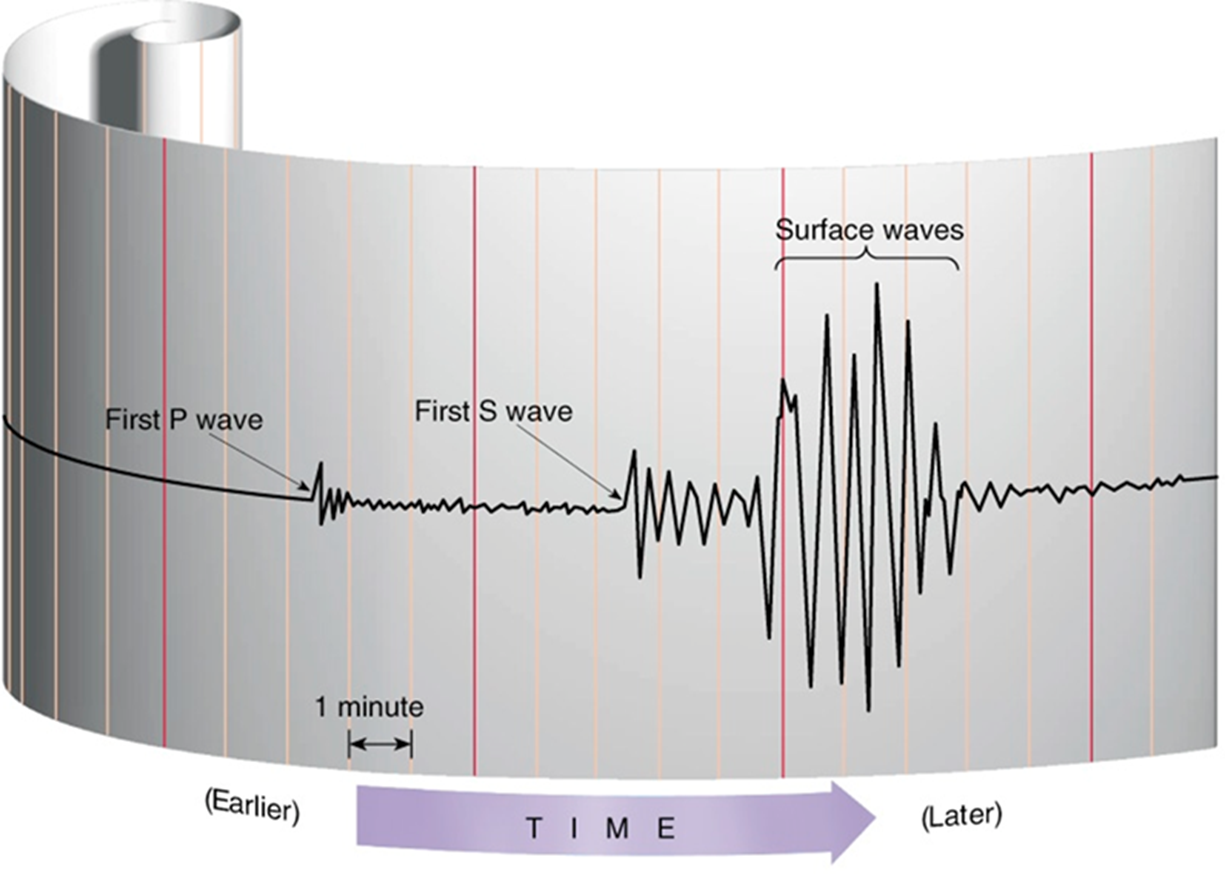
What is the fault, focus and epicentre in an earthquake
•The fault is the fracture or zone of weakness where an earthquake occurs.
•The focus is the original point of rupture within the Earth where seismic waves originate.
•The epicentre is the point on the Earth's surface directly above the focus, often experiencing the strongest shaking.
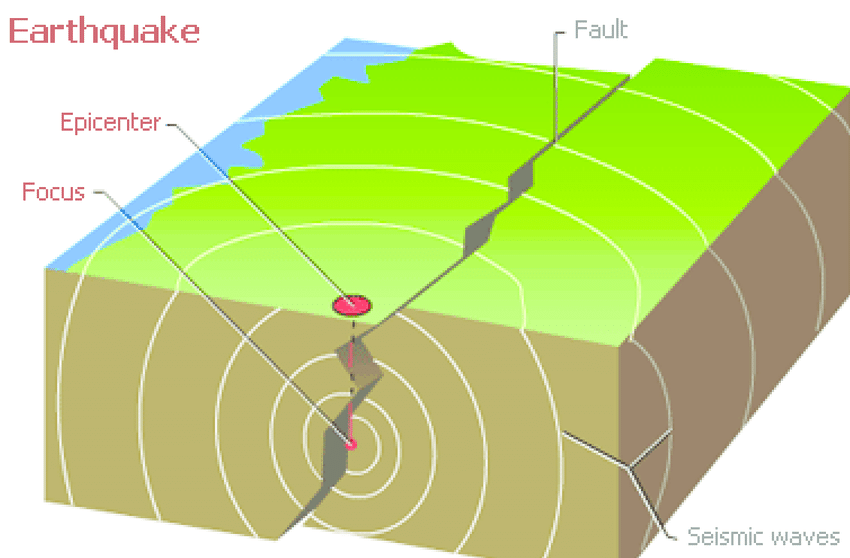
Identify differences between the Mercalli and richter scales
The Mercalli Scale measures the intensity of an earthquake based on observed effects and human reactions, while the Richter Scale measures the magnitude of an earthquake based on seismic wave amplitude.
Explain how three earthquake stations are needed to triangulate the distance to the epicentre of an earthquake
Three earthquake stations are needed to triangulate the distance to the epicentre by measuring the arrival times of seismic waves. Each station calculates its distance to the epicentre based on the difference in arrival times of P and S waves, and the intersection of these distances determines the epicentre's location.

explain how tsunami's form from a large displacement of water
Tsunamis form from a large displacement of water usually caused by underwater earthquakes, volcanic eruptions, or landslides. This sudden shift displaces water and generates waves that can travel across oceans at high speeds.
how tsunami's grow as they approach the coastline

As tsunamis approach the coastline, they slow down and increase in height due to the decreasing depth of the ocean floor, leading to wave amplification.
relate the presence of tsunami's to earthquakes at transform and convergent boundaries

Tsunamis are often associated with earthquakes at transform and convergent boundaries, as these tectonic movements can cause significant underwater disturbances. At convergent boundaries, subduction can lead to massive displacements of the ocean floor, while transform boundaries can create stress that generates tsunamis from fault movement.
What is a Tsunami?

Describe the types of forces that earthquake apply to buildings, and explain why they can be so damaging.
Earthquakes exert forces like shaking, shear, and ground displacement on buildings. These forces can cause structures to sway, twist, and potentially collapse. The damage occurs because buildings are not always designed to withstand such intense and unpredictable forces, especially horizontal shaking, which can compromise their stability.
explain how Moment frame, braced frame, shear wall, base isolation, damped frame, active control system are each designed to withstand and earthquake
Moment Frame: Uses strong columns and beams connected to resist bending forces from earthquakes.
Braced Frame: Employs diagonal steel braces to create triangles within the frame, enhancing resistance to lateral forces. *
Shear Wall: Reinforced concrete or braced walls that resist lateral loads, preventing the building from twisting or collapsing.
Base Isolation: Separates the building from the ground using flexible bearings, reducing the amount of shaking transferred to the structure. *
Damped Frame: Incorporates energy-absorbing devices to reduce vibrations and stress on the building during an earthquake.
Active Control System: Uses sensors and actuators to counteract the forces exerted by an earthquake in real-time, stabilizing the building.
Explain the different techniques used to predict and warn of Earthquakes, do two and explain properly

Nowcasting:
Technique: Nowcasting involves monitoring current seismic activity to make short-term predictions about the likelihood of a larger earthquake.
How it Works: By analyzing patterns of small tremors and other seismic events, scientists can assess the probability of a major earthquake in the immediate future.
Earthquake Lights:
Technique: Observing unusual luminous phenomena that appear in the sky during seismic activity can sometimes help predict earthquakes.
How it Works: Lights emit due to the movement or stress of rocks underground. Its prediction is difficult however, but correlated with earthquakes.
explain how ground deformation and sesmology is used o predict and warn of volcancn erruptions
Ground deformation tracks changes in Earth's surface using GPS and satellite imagery, indicating magma movement. Seismology monitors earthquake activity to detect volcanic tremors and predict eruptions.
Explain how a deep sea senosry is used to predict and warn of tsunamis
A deep sea sensor, often part of a tsunami detection system, monitors changes in water pressure and sea level to detect potential tsunamis. When abnormal fluctuations are detected, the data is relayed to warning centers to alert coastal communities of impending tsunamis.
Explain the process of harnessing geothermal energy

Geothermal energy harnessing involves extracting heat from the Earth's interior through drilling wells. This heat can be converted into electricity or used directly for heating, facilitating sustainable energy production.
describe the similarities and differences between the three main types of geothermal energy
Describe the advantages and disadvantages of geothermal energy

Geothermal energy has several advantages including being a renewable and sustainable energy source, low emissions, and a small land footprint. However, disadvantages include high initial costs, limited geographic availability, and potential for induced seismicity.
Describe what is happening in each point abive the dagram
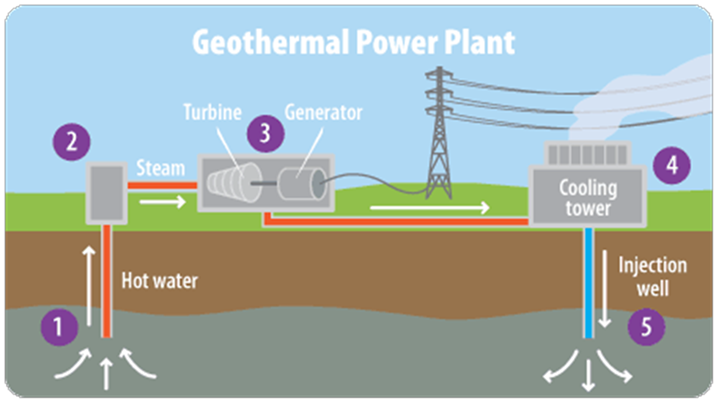

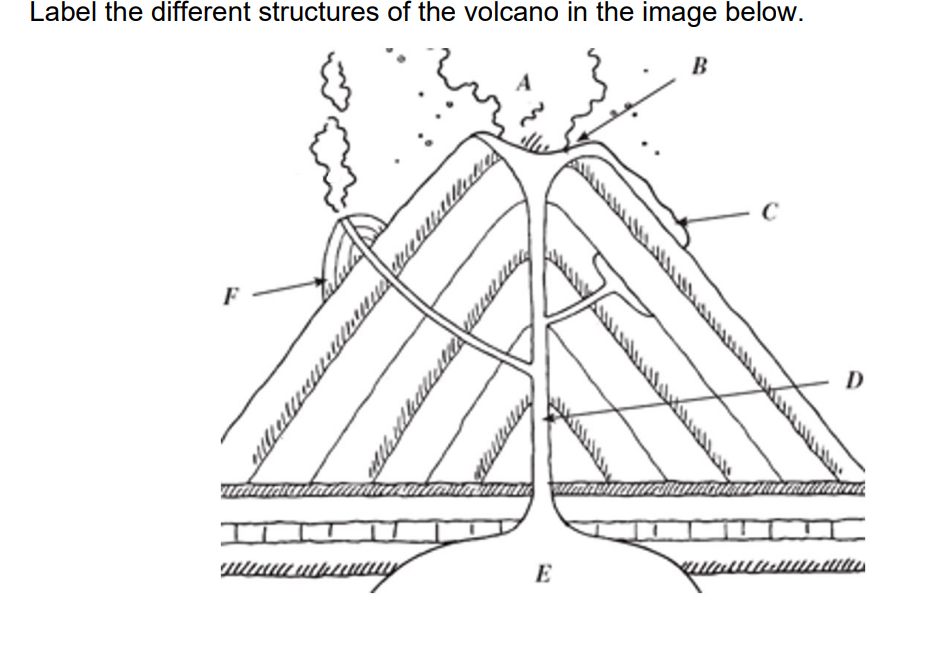

m, explain how convection currents drive the movement of tectonic plates.
As the magma heats up it becomes less dense and rises (1) ( - ½ if no density) and at the top the magma cools, becomes denser and sinks (1) ( - ½ if no density) • causing circular convection currents that pull on plates, forcing them apart (1) • Labelled diagram drawn in pencil (1)
List the three key steps involved in locating the epicentre once the arrival time of the P and S waves are known.
1. Determine the distance of the station from the epicentre (1) • 2. Draw the radial distance around each station (1) • 3. Identify where the three radii intersect, that’s the epicentre (1)
List the three types of geothermal energy.
Volcanic systems (1) • Sedimentary geothermal/hot sedimentary aquifer (1) • Hot rocks/enhanced geothermal system